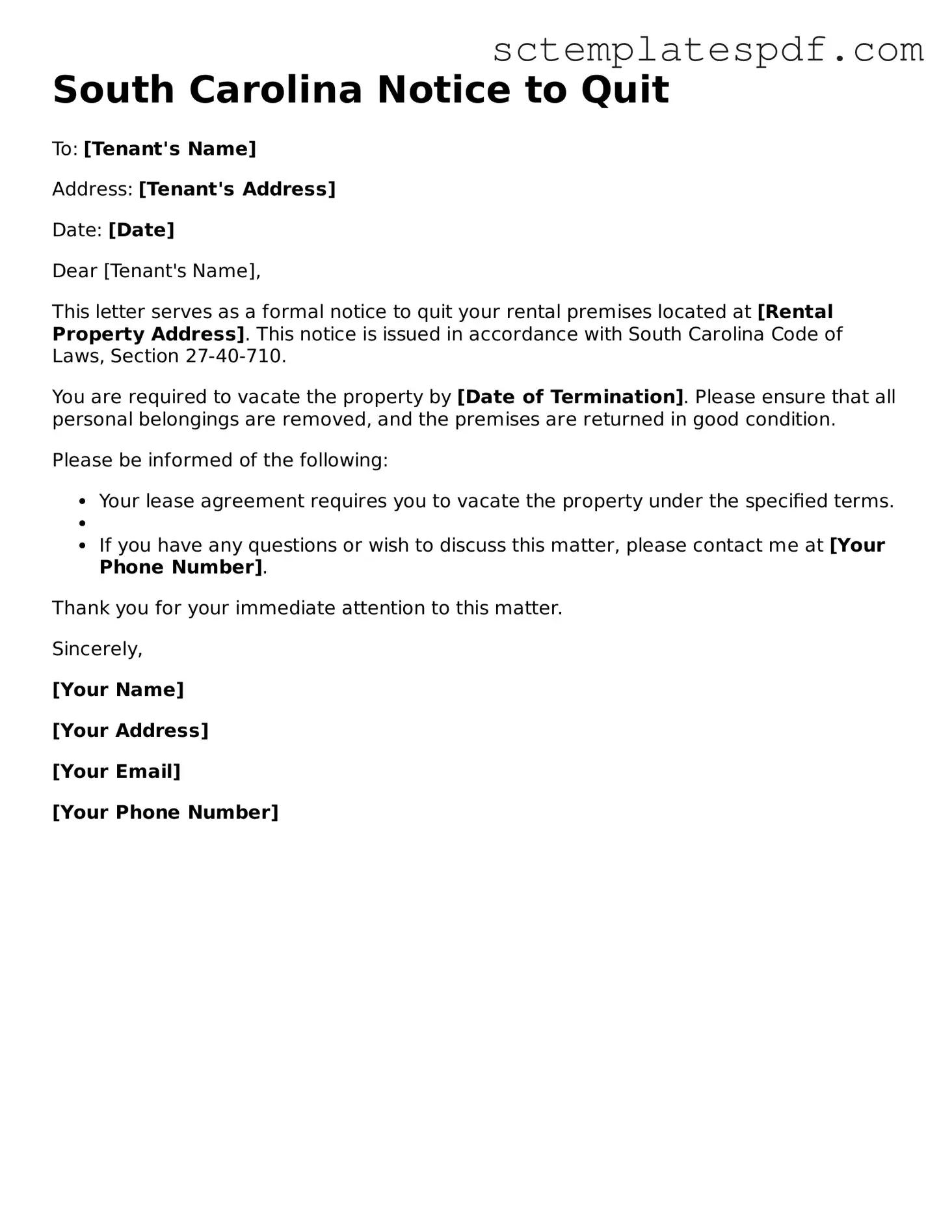Valid South Carolina Notice to Quit Document
The South Carolina Notice to Quit form is a legal document that a landlord uses to notify a tenant of the need to vacate the rental property. This form serves as an official request, outlining the reasons for the eviction and providing a timeline for the tenant to leave. Understanding this form is essential for both landlords and tenants to ensure compliance with state laws.
To fill out the form, click the button below.
Fill Out Your Notice to Quit
